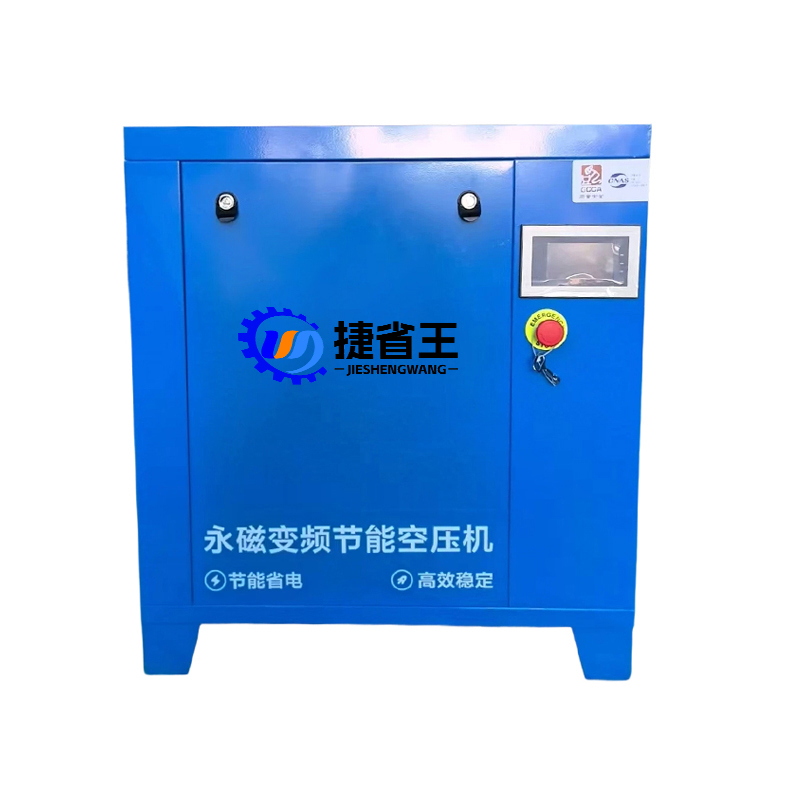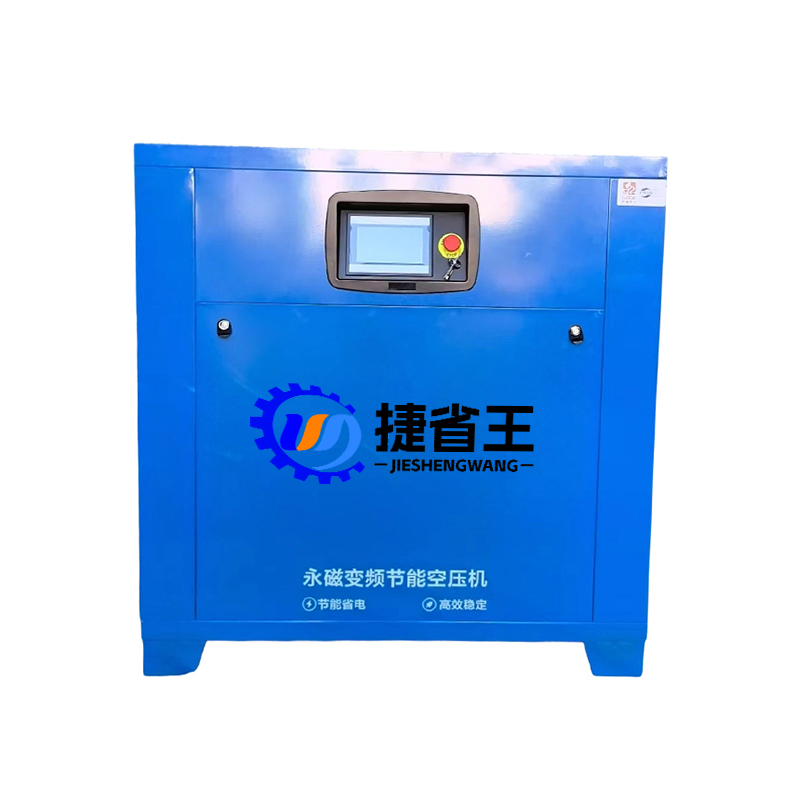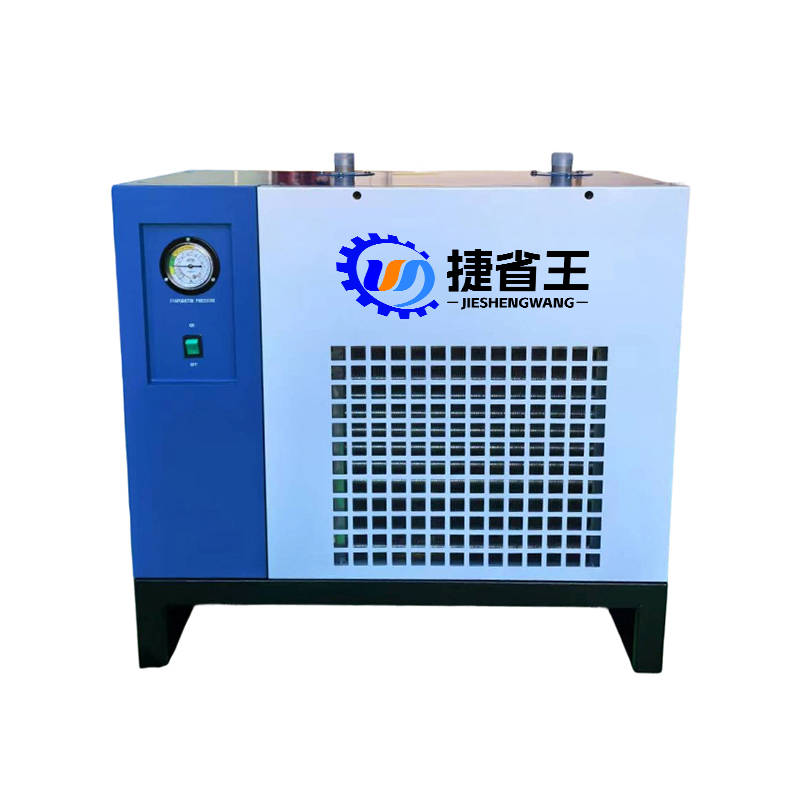How does a normal temperature refrigerated dryer dehydrate materials without using cryogenic temperatures?
Release Time : 2025-08-05
Traditional freeze-drying technology relies on freezing the moisture in the material. Then, through reduced pressure, the ice sublimates directly into gas, achieving dehydration. However, with technological advancements, normal temperature refrigerated dryers are gradually changing this traditional model. These devices can achieve efficient dehydration without using cryogenic temperatures, bringing new solutions to fields such as pharmaceuticals, food processing, and biological products.
1. Optimizing Environmental Control
The core of a normal temperature refrigerated dryer lies in its advanced environmental control system. By precisely regulating temperature, humidity, and airflow, the equipment creates an ideal dehydration environment. First, the internal temperature control system ensures that the material is always within the appropriate temperature range, preventing freezing caused by excessively low temperatures. Second, the humidity control system monitors and adjusts the humidity level in the air in real time, maintaining a low relative humidity on the material surface and promoting rapid evaporation of moisture. Furthermore, the equipment is equipped with an efficient ventilation system that continuously supplies fresh air to remove evaporated moisture and maintain a stable drying process. This comprehensive environmental control strategy not only improves dehydration efficiency but also ensures the quality and structural integrity of the material.
2. Intelligent Monitoring and Feedback Mechanism
The normal temperature refrigerated dryer is equipped with an intelligent monitoring and feedback system that monitors material changes in real time and automatically adjusts operating parameters as needed. For example, during the drying process, the equipment continuously measures the material's moisture content and adjusts key parameters such as temperature, humidity, and airflow rate accordingly to ensure optimal drying results. This dynamic adjustment mechanism allows the equipment to adapt to different material characteristics, effectively processing everything from high-moisture fruits and vegetables to viscous liquid samples. Furthermore, the intelligent feedback system records data from each drying process for subsequent analysis and process optimization. By analyzing historical data, companies can further improve production efficiency and reduce energy costs.
3. Material Selection and Design Innovation
To achieve efficient dehydration at room temperature, the normal temperature refrigerated dryer incorporates numerous innovations in material selection and structural design. The equipment's interior is constructed of high-performance moisture-absorbing materials with an extremely high specific surface area and excellent moisture absorption properties. These materials rapidly absorb moisture from the surrounding environment, accelerating the drying process. Furthermore, the equipment's exterior is constructed of a composite material with excellent thermal insulation properties, effectively reducing heat transfer from the outside and maintaining a stable internal environment. The normal temperature refrigerated dryer adopts a modular design concept, allowing users to flexibly configure different functional modules, such as the pre-treatment unit, main drying unit, and post-treatment unit, based on their specific needs. This flexibility not only meets diverse product processing requirements but also facilitates equipment maintenance and upgrades.
4. Multiple Protection Measures Ensure Safety
While pursuing efficient dehydration, the normal temperature refrigerated dryer also prioritizes safety and reliability. It is equipped with multiple protection measures, such as overheat protection, leakage protection, and pressure monitoring, to ensure stable operation under various operating conditions. Especially when handling flammable, explosive, or toxic and hazardous materials, the equipment's built-in safety devices can promptly detect abnormalities and initiate appropriate emergency measures to prevent accidents. Furthermore, the equipment features a user-friendly interface and self-diagnostic functionality. When a fault occurs, the system automatically displays the specific cause and solution, significantly reducing repair time and lowering operating costs.
5. Significant Economic Benefits
Although the normal temperature refrigerated dryer possesses high technical requirements, its economic benefits are also significant. Firstly, since it eliminates the need for a refrigeration system, the equipment's purchase cost and operating energy consumption are significantly reduced, saving businesses significant money in the long term. Secondly, its efficient dehydration capacity translates to higher output and shorter production cycles, helping to enhance businesses' market competitiveness. Furthermore, the equipment's durability and ease of maintenance provide additional cost savings.
By optimizing environmental control, introducing an intelligent monitoring system, selecting advanced materials, and implementing multiple protective measures, the normal temperature refrigerated dryer achieves efficient dehydration without requiring low temperatures. Its widespread adoption not only improves product quality but also creates significant economic benefits for businesses.
1. Optimizing Environmental Control
The core of a normal temperature refrigerated dryer lies in its advanced environmental control system. By precisely regulating temperature, humidity, and airflow, the equipment creates an ideal dehydration environment. First, the internal temperature control system ensures that the material is always within the appropriate temperature range, preventing freezing caused by excessively low temperatures. Second, the humidity control system monitors and adjusts the humidity level in the air in real time, maintaining a low relative humidity on the material surface and promoting rapid evaporation of moisture. Furthermore, the equipment is equipped with an efficient ventilation system that continuously supplies fresh air to remove evaporated moisture and maintain a stable drying process. This comprehensive environmental control strategy not only improves dehydration efficiency but also ensures the quality and structural integrity of the material.
2. Intelligent Monitoring and Feedback Mechanism
The normal temperature refrigerated dryer is equipped with an intelligent monitoring and feedback system that monitors material changes in real time and automatically adjusts operating parameters as needed. For example, during the drying process, the equipment continuously measures the material's moisture content and adjusts key parameters such as temperature, humidity, and airflow rate accordingly to ensure optimal drying results. This dynamic adjustment mechanism allows the equipment to adapt to different material characteristics, effectively processing everything from high-moisture fruits and vegetables to viscous liquid samples. Furthermore, the intelligent feedback system records data from each drying process for subsequent analysis and process optimization. By analyzing historical data, companies can further improve production efficiency and reduce energy costs.
3. Material Selection and Design Innovation
To achieve efficient dehydration at room temperature, the normal temperature refrigerated dryer incorporates numerous innovations in material selection and structural design. The equipment's interior is constructed of high-performance moisture-absorbing materials with an extremely high specific surface area and excellent moisture absorption properties. These materials rapidly absorb moisture from the surrounding environment, accelerating the drying process. Furthermore, the equipment's exterior is constructed of a composite material with excellent thermal insulation properties, effectively reducing heat transfer from the outside and maintaining a stable internal environment. The normal temperature refrigerated dryer adopts a modular design concept, allowing users to flexibly configure different functional modules, such as the pre-treatment unit, main drying unit, and post-treatment unit, based on their specific needs. This flexibility not only meets diverse product processing requirements but also facilitates equipment maintenance and upgrades.
4. Multiple Protection Measures Ensure Safety
While pursuing efficient dehydration, the normal temperature refrigerated dryer also prioritizes safety and reliability. It is equipped with multiple protection measures, such as overheat protection, leakage protection, and pressure monitoring, to ensure stable operation under various operating conditions. Especially when handling flammable, explosive, or toxic and hazardous materials, the equipment's built-in safety devices can promptly detect abnormalities and initiate appropriate emergency measures to prevent accidents. Furthermore, the equipment features a user-friendly interface and self-diagnostic functionality. When a fault occurs, the system automatically displays the specific cause and solution, significantly reducing repair time and lowering operating costs.
5. Significant Economic Benefits
Although the normal temperature refrigerated dryer possesses high technical requirements, its economic benefits are also significant. Firstly, since it eliminates the need for a refrigeration system, the equipment's purchase cost and operating energy consumption are significantly reduced, saving businesses significant money in the long term. Secondly, its efficient dehydration capacity translates to higher output and shorter production cycles, helping to enhance businesses' market competitiveness. Furthermore, the equipment's durability and ease of maintenance provide additional cost savings.
By optimizing environmental control, introducing an intelligent monitoring system, selecting advanced materials, and implementing multiple protective measures, the normal temperature refrigerated dryer achieves efficient dehydration without requiring low temperatures. Its widespread adoption not only improves product quality but also creates significant economic benefits for businesses.






